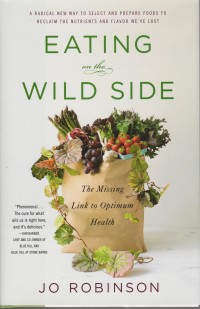I was adding a remark about agave nectar to the comments under a very generous review of my book on “Hungry Vegan,” when it occurred to me that I should probably elaborate a little. It began with a comment someone made about substituting agave nectar with maple syrup, presumably owing to the controversy over using agave as a “healthier option” sugar substitute. Agave nectar is among the latest of what I think could best be described as “fad-sugar-substitutes.” Oh, no! Did I really just say that? Sorry, yes I did, and I’ll get to the reason for this (rather longstanding) sugar-switching fad in a future post, but first, I’ve gotta come clean on agave nectar, because I’ve used it in my recipes.
If we believe the marketing, agave nectar looks like a natural health product, taken right out of a plant, poured into a bottle, and sooo much better for you than that nasty white sugar, and especially that über-nasty high fructose corn syrup. The truth isn’t anywhere near as fun, but here it is: The liquid extracted from some species of agave plants is in fact quite nutritious–it’s rich in vitamins C, D, E and B-complex, amino acids, and minerals. It’s called “agua miel” (honey water). I grew up in Mexico, and I got to taste this stuff as a kid, so I can tell you that this is definitely not what is being sold as “agave nectar.”
The clear, viscous syrup in those cutesy bottles at the health food store is not the natural juice or sap of agave plants. In fact, it’s not made from juice of any kind, but from the starchy core of the plant’s root, in much the same way as high fructose corn syrup is made from corn–by (unnaturally!) converting starch to sugar, using GMO enzymes; it’s treated with harsh chemicals, clarified and filtered the same way–but the end product is very different, and not in a good way. Whereas HFCS is roughly 55% fructose, agave nectar is nearly ALL fructose (anywhere from 70% to 98%, depending on the source).
“But, but…”
I know, I know, it was looking so good with its highly touted low glycemic index. And that part is certainly true, but only because fructose doesn’t get converted into blood glucose like other sugars, so it doesn’t cause blood sugar spikes (or crashes). This sounds pretty good, especially for diabetics, but it’s not. Other sugars are processed through the digestive tract, enter the blood as glucose, which is clean fuel, and only cause a problem when there is too much at once, as occurs when we eat refined sugar versus, say, a piece of fruit or a root vegetable. Uniquely, fructose is processed by the liver–into triglycerides, which either end up sloshing through your veins (sometimes clogging them) or accumulating around your middle as body fat. Elevated triglycerides and visceral fat are both high risk factors for cardiovascular disease. Large quantities of fructose also put tremendous stress on the liver. To make matters worse, fructose apparently messes with the body’s production of leptin (a hormone that signals satiety), so there is no message from the brain telling you to stop eating. For overweight people, this is a nightmare scenario, and for diabetics it’s even worse.
So much for agave as a “safe” way to get your sweet on, huh?








I just wrote an article on agave too! We’re on the same wavelength, friend.
http://deliciousvitality.com/blog/natural-sweetener-smack-down-agave/
brilliant, just brilliant. I just linked this into a blog posting that I did yesterday. Thank you!
Very interesting,
which are the other sugars you speak about that are digested in the d. tract??
Thanks, everyone!
Daniel: Those would be glucose, lactose (for dairy eaters), dextrose, maltose, etc. The sweeteners we use are compounds–sucrose (table sugar) is half glucose and half fructose; honey contains about 38% fructose, 31% glucose, 7% maltose; HFCS is about 45% glucose, 55% fructose. Agave is anywhere from 70% to 98% fructose. None of these are cause for alarm, as long as we keep them to a minimum, but unfortunately, the modern diet is full of sugar–already in most processed foods–and agave added on top of that is pretty scary.
Full disclosure: I’m not a health expert. I’m learning as I go, and sharing what I learn. I’ve personally experienced increased vitality and wellbeing from eating less sugar of any kind (meaning added, versus the naturally occurring sugars in fruits, grains, and vegetables).